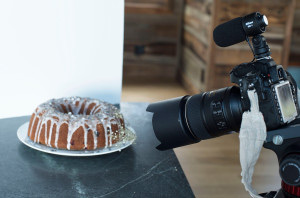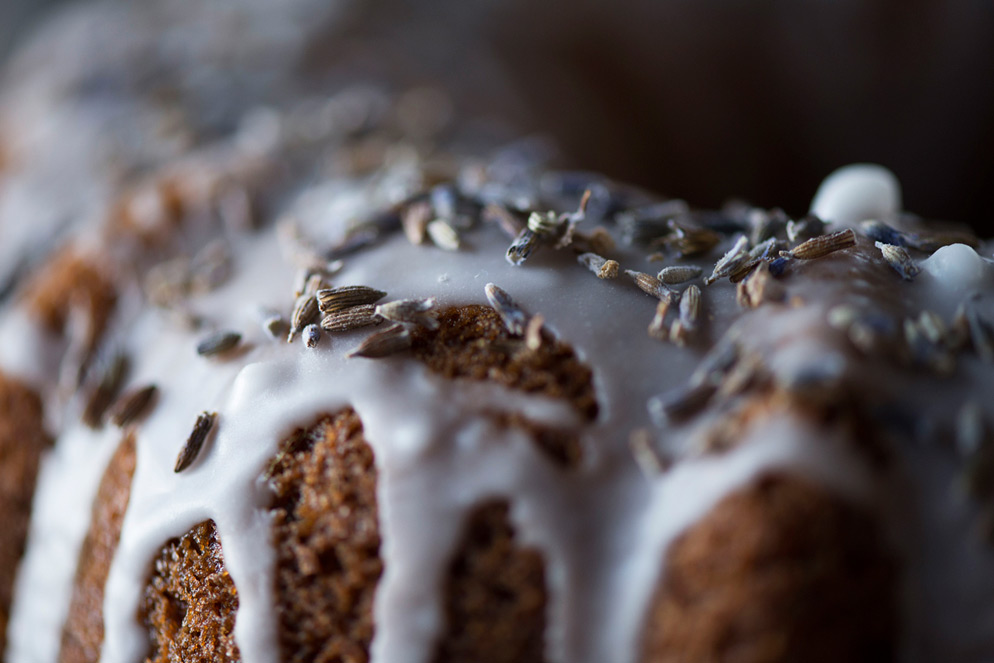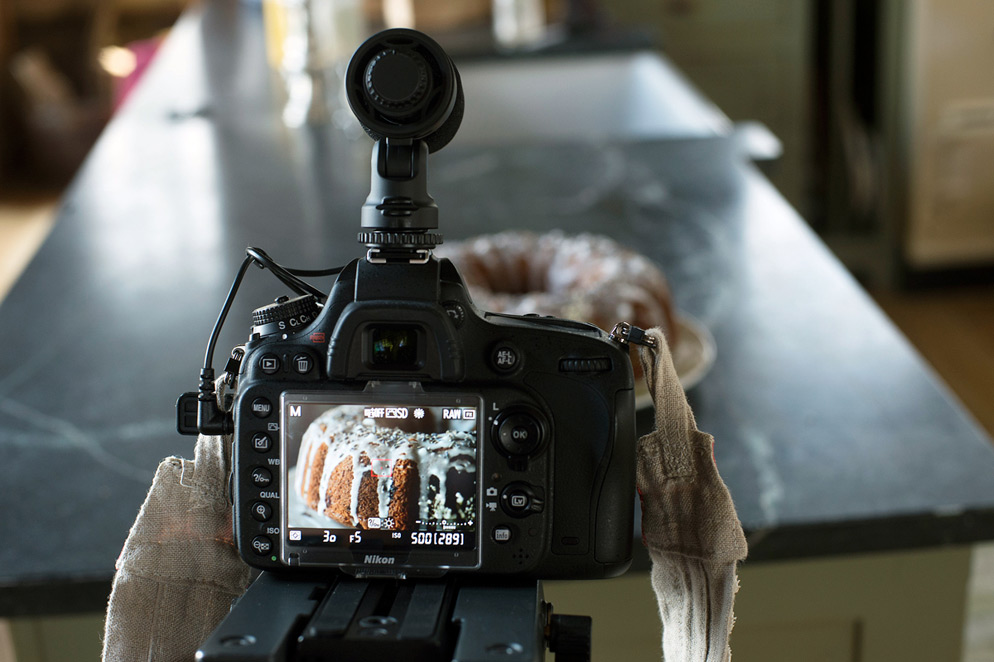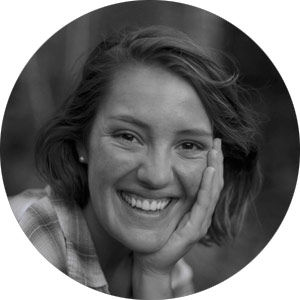Beautiful Food, Captured Beautifully in Video by Elke Talbot
Watch the short video of a cake being made, shot using a Nikon DSLR.
Creating an Appetizing Food Preparation Video:
The Nikon Everyday Cinema Contest, held in 2014, drew more than 500 participants. Celebrating the art of HDSLR videomaking, entrants were asked to create a film capture of an everyday moment that had been fashioned into a cinematic short. Elke Talbot from Boone, North Carolina, impressed judges with her lush and cinematic glance at everyday food preparation, receiving third place honors.
Talbot began her photo education at the age of fifteen by taking photography/videography classes as a high school student. She pursued photography on her own, later deciding to pursue food capture through the lens at the Commercial Photography department of Appalachian State University.
Since that time she admits to photographing all kinds of foods—and very often. Regarding her Nikon HDSLR video experience, Talbot feels she’s merely a beginner. It was only last year when she took her first motion capture class. It was in that class that she really learned how to effectively deal with audio and editing.
“Cake” is Talbot’s appetizing food preparation video entry. “I love the ability that video gives, unlike still photography, in being able to tell or create a story through delicious food, plus experience it with movement through composition,” she shares. “I am naturally attracted to details that I believe people overlook when considering still and motion work in culinary subject matter.”
For the Nikon Everyday Cinema competition, Talbot felt the topic of baking would be an interesting candidate. “It is a simple ritual that many people go through every so often—or for some all the time—without realizing its cinematic aspects. Baking is a production: you follow a recipe, gather all the items needed, find all the props (bowls, mixers, etc.) and then blend together to make a single product.”
Nikon D600 setup to capture the final scenes of “Cake”.
Cranberries and Orange Zest
Made during the months she attended videography classes, “Cake” was one of her first attempts at scripted storytelling capture. Her fondness for food, food cultures and experiences associated with food lead her to select this subject as a theme.
“We filmed during the middle of winter,” she adds. “I was inspired by the cranberry bread that my mother always makes around Christmas time. The deep red berries and orange zest would provide beautiful contrast to the creaminess of a cake batter. And I could clearly envision the moments of capture as the glaze gracefully enhanced the cake.”
Her set-up was quite simple; most preparation effort was dedicated to location scouting, determining and gathering props and ingredients, then writing a shot list.
“I borrowed a beautiful mountain home where I could film. This one receives great light in the afternoon through its numerous large windows.” With her cabin lined up. Talbot tracked down two stars of the production—a very clear glass bowl that would work for close-in shots of the mixing, egg cracking and preparation—plus a sprig of baby’s breath flower that is seen at the close of the film. After these items were taken care of, I planned the prep for ingredients, then the focus of each shot and each step that deserved capture.”
Baking “Cake”
“When shooting “Cake” I worked at 24 fps,” she notes. “The close-up shots just came instinctively. I am intrigued by what is hidden within the processes behind food—movements, taste, smells, textures, mood and light—not just the big picture. Food is so often overlooked and taken for granted. I like to focus in closer and make viewers really see the beauty in the process of food.” One necessity for success in capturing effective close-ups is great lighting. “An interesting close-up can be made really special and impressive if captured in great natural light.”
With the late afternoon rays streaming through the many large windows, the only gear Talbot used, aside from her Nikon DSLR and an AF-S VR Micro-NIKKOR 105mm f/2.8G IF-ED lens, was a simple video tripod. The tripod assisted for panning movements and to maintain steady capture. “Natural light brought the textures and colors to life,” she notes. “I wanted to keep it as basic and simple as possible to get the cleanest, most natural feeling shots. Reflecting aids were not necessary because we were surrounded by windows—the venue became a natural light box.”
During filming, Talbot often kept a small distance from her subject. “The 105mm lens allowed me to work with just enough space to capture my subject without creating a hard shadow. For tighter shots I was obviously right next to the subject. But because I was in so tight, it was really easy to control what came into the frame,” she explains. In other words, the closer she got, the less likely it was for her own shadow to appear in the frame.
The flipside of light is dark, and Talbot works shadow areas in a most cinematic manner. “Utilizing that darkness of [the] background can be a great way to naturally guide the viewer’s eyes to your subject. The effect of fall-off into darkness is something I love to incorporate. It instantly creates emphasis on the bright point.”
Macro shot of cranberry cake from the short film “Cake”.
Filmmaker List of Ingredients
Aside from effective use of light and shadow, Talbot shares additional tips & tricks she follows when working in close-up mode:
1) Close-up shots are more abstract and can be harder to interpret or understand in a story flow unless they are shown in proper sequence. You can capture subject matter in any order, but in post, sequence your shots in a way such as to make sense of the overall vision. 2) Record various shot sizes and shot angles—when editing you have a lot from which to choose; variety makes the video really interesting and engaging. 3) Shoot from an angle so that no distracting shadows, or reflection in shiny objects, fall into the frame. 4) Consider props and garnishes. Don’t overdo your styling, but know that the addition of props can provide context and assist narrative. 5) Color can be considered a prop. If your food is all one tone, find a way to add a touch of contrast with a garnish or a prop that breaks up composition, plus increases personality.
Cinematic Color with an Impressionist Approach.
A color palette on film leaves a marked impression on the viewer. Talbot prefers pairing foods together, and/or utilizing props, that either provide nice contrast or complement one another in an effective manner. The tones for “Cake” include generally warmer colors—reds, yellows, whites and cream.
“The color palette can contribute to creating a mood, and can also assist the viewer in interpreting tastes and smells that are associated with the food. Choose a suitable tonal range. It’s extremely important to use only quality ingredients. Close-up shots reveal all—you need to keep a keen eye to avoid flawed ingredients.” Other thoughts: “Depending upon the food being photographed, a partially cooked dish may yield a fresher ingredient look. This is often the case with vegetables and meats, or usually anything sautéed.”
Work without wasting time. “I start by preparing the dish. While it’s cooking or baking, I pre-style my upcoming shot. Stand-in objects are placed into my desired framing region. I determine focus, crop and composition.” As soon as the dish is ready, she places it and starts capture. Pre-staging efficiency yields a little buffer of time in case the set-up needs tweaking. “Work rapidly and with intention to get your image capture completed before the dish looks dry or bland,” she advises. “With prepared food, when it’s ready, it’s ready. You need to be ready.”
Not Captured on Film
For Talbot, baking, as with photography and videography, is a passion. With a grin she reveals a little sideline to the “Cake” story. “The home I borrowed had an antique oven. The oven ended up taking me and my assistant quite a while to figure out how to get it going. There was a small dose of panic that day; we were literally losing daylight. Then we completely forgot to add the baking powder and baking soda to the mix.” Minus those ingredients, Talbot’s end result was a seriously dense cake. She laughs and says obviously it was nothing like her mother’s cooking—from which she was originally inspired.
Talbot believes it took around eight to ten hours to create “Cake.” Roughly six of those hours were dedicated to prep work and capture time; the other four hours went to locating a perfect audio track, then editing all of the pieces together.
Using her Nikon Everyday Cinema package, Talbot will continue to bake and film. “I’ve imitated this style of close-up interpretation for a couple of still photography clients, but have not done so for a client videography piece. I’m exploring and further perfecting.”
Winning the competition has pushed her desire to photograph food even more. “I have shot with a D600 many times and love the camera, so was thrilled to win one,” she exudes. “This happened at a perfect time since I am currently building my food photography and videography portfolio. Not a week has gone by when I have not used the Nikon D600 to create.”

D600 & AF-S VR Micro-Nikkor 105mm f/2.8G IF-ED setup to capture final scenes of the short film “Cake”.








